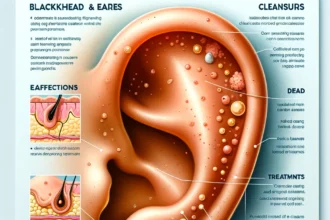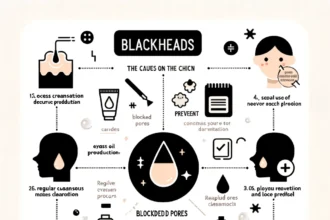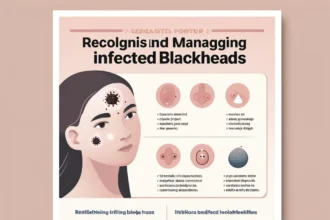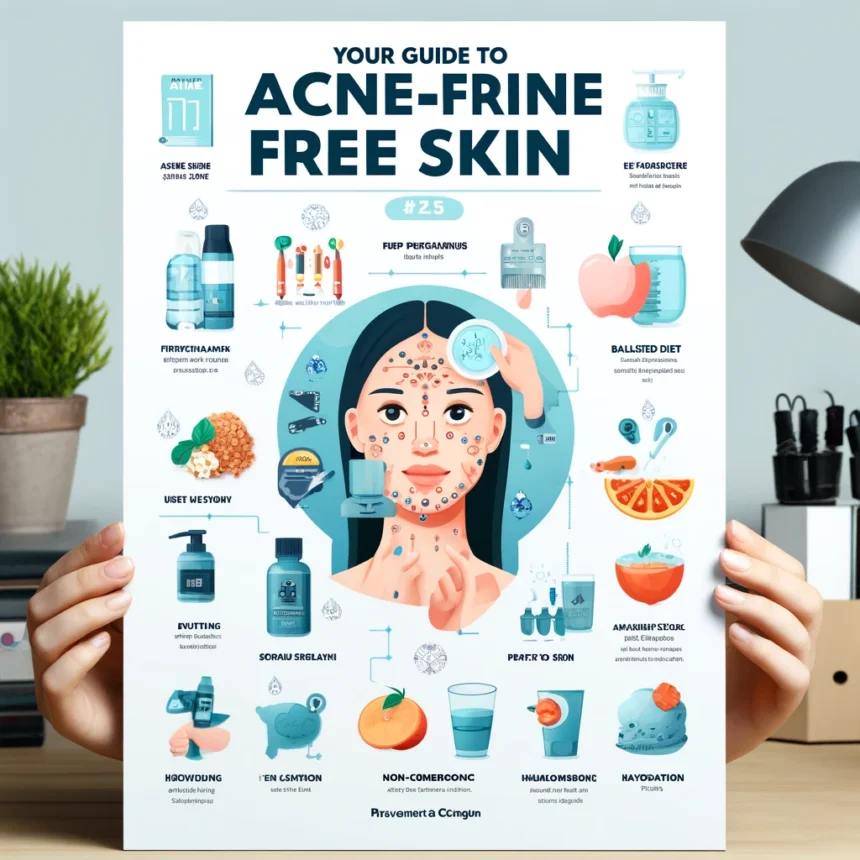These unwelcome visitors can tarnish any day and leave lasting marks not just on the skin, but on self-esteem. However, the battle against acne isn’t lost in the confines of a bathroom. With the right knowledge and tools, achieving that dream skin can become your new reality. This guide will arm you with everything you need to fend off acne and maintain healthy, glowing skin. Read on, as this isn’t just about skincare—it’s about reclaiming your reflection.
Understanding Acne
Acne vulgaris, commonly known as acne, is a skin condition that occurs when hair follicles become clogged with oil and dead skin cells. It frequently manifests as pimples, blackheads, and whiteheads, primarily on the face, forehead, chest, upper back, and shoulders. Here’s what triggers these breakouts:
• Excess oil production
• Hair follicles clogged by oil and dead skin cells
• Bacteria
• Excess activity of a type of hormone (androgens)
Hormonal Influence
During puberty, hormonal changes can cause the sebaceous glands to overproduce sebum, which can lead to acne. This is also why acne is common among teenagers. However, hormonal acne can afflict adults, too, particularly women, who may experience breakouts around menstrual cycles, during pregnancy, or with conditions like polycystic ovarian syndrome (PCOS).
Dietary Impact
Studies have suggested that certain dietary factors, including dairy products and carbohydrate-rich foods—such as bread, bagels, and chips—may trigger acne in some people. A well-known 2002 study published in the Journal of the American Academy of Dermatology found a link between milk and acne severity.
Preventative Measures and Treatments
Let’s delve into effective strategies and treatments that can help manage, prevent, and treat acne.
Skincare Routine
- Cleanse Gently But Thoroughly: Start and end your day by washing your face with a mild cleanser to remove excess oil and dirt.
- Example: Cetaphil and La Roche-Posay are popular choices among dermatologists.
- Exfoliate Weekly: Remove dead skin cells and unclog pores by exfoliating with a gentle scrub or a chemical exfoliant containing salicylic acid or glycolic acid once a week.
- Example: Neutrogena’s Hydro Boost Exfoliating Cleanser.
- Moisturize Daily: Hydration is key—even for oily skin. Choose oil-free, non-comedogenic moisturizers that won’t clog pores.
- Example: Neutrogena Oil-Free Moisture for Combination Skin.
Sun Protection: Protect your skin from harmful UV rays, which can exacerbate acne marks. Use a non comedogenic sunscreen daily.
- Example: Elta MD UV Clear Broad-Spectrum SPF 46.
Diet and Lifestyle Adjustments
- Adopt a Low Glycemic Diet: Incorporate more whole grains, legumes, unprocessed fruits, and vegetables into your diet.
- Stay Hydrated: Drink plenty of water throughout the day to help detoxify your body and keep your skin hydrated.
- Regular Exercise: Increase blood circulation and promote the removal of toxins through sweat, which can help reduce acne.
Medical Treatments
- Topical Treatments: These include over-the-counter (OTC) creams and gels containing retinoids, benzoyl peroxide, and antibiotics that reduce oil production and bacteria.
Example: Differin Gel (adapalene 0.1%).
- Prescription Medications: For severe acne, dermatologists may prescribe oral antibiotics or isotretinoin (Accutane), known for its effectiveness in treating resistant and severe acne.
- Professional Skin Treatments: Chemical peels, microdermabrasion, and laser therapy can help reduce the appearance of scars and severe acne.
Home Remedies
- Tea Tree Oil: Known for its anti-inflammatory and antimicrobial properties, it can reduce swelling and redness.
- Usage: Mix one part tea tree oil with nine parts water and apply to the affected area with a cotton swab.
- Green Tea: High in antioxidants, applying cooled green tea to the skin has been shown to reduce sebum production.
- Aloe Vera: Soothes the skin and can help heal scars due to its anti-inflammatory properties.
- Usage: Apply pure aloe vera gel to clean skin as a moisturizer.
Conclusion
While acne can be persistent and frustrating, the right combination of lifestyle changes, skincare products, and professional guidance can make a significant difference. Start with small steps, like adjusting your diet and perfecting your skincare routine, and consider professional treatments if necessary. Remember, the journey to clear skin is a marathon, not a sprint. With patience and persistence, you can achieve the clear, radiant complexion you desire.
Maintaining acne-free skin is an attainable goal with a well-rounded approach to lifestyle, skincare, and possibly medical interventions. Each step you take is a move toward not only clearer skin but also greater confidence and well-being.







Thank you for your sharing. I am worried that I lack creative ideas. It is your article that makes me full of hope. Thank you. But, I have a question, can you help me?
Your article helped me a lot, is there any more related content? Thanks!
Your article helped me a lot, is there any more related content? Thanks!
Thanks for sharing. I read many of your blog posts, cool, your blog is very good.
I don’t think the title of your article matches the content lol. Just kidding, mainly because I had some doubts after reading the article.